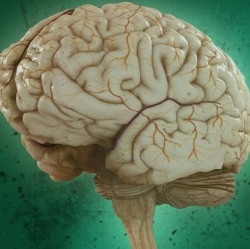
Scientists say a part of the brain, smaller than a pea, triggers the instinctive feeling that something bad is about to happen. Writing in the journal PNAS, they suggest the habenula plays a key role in how humans predict, learn from and respond to nasty experiences. They question whether hyperactivity in this area is responsible for the pessimism in depression.
They are now investigating whether the structure is involved in the condition. Animal studies have shown that the habenula fires up when subjects expect or experience adverse events, But in humans this tiny structure (less than 3mm in diameter) has proved difficult to see on scans. Inventing a technique to pinpoint the area, scientists at University College London put 23 people though MRI scanners to monitor their brain activity.
Participants were shown a range of abstract pictures. A few seconds later, the images were linked to either punishment (painful electric shocks), reward (money) or neutral responses. For some images, a punishment or reward followed each time but for others this varied, leaving people uncertain whether they were going to feel pain or not.
And when people saw pictures associated with shocks the habenula lit up. And the more certain they were a picture was going to result in a punishment, the stronger and faster the activity in this area. Scientists suggests the habenula is involved in helping people learn when it is best to stay away from something and may also signal just how bad a nasty event is likely to be.
